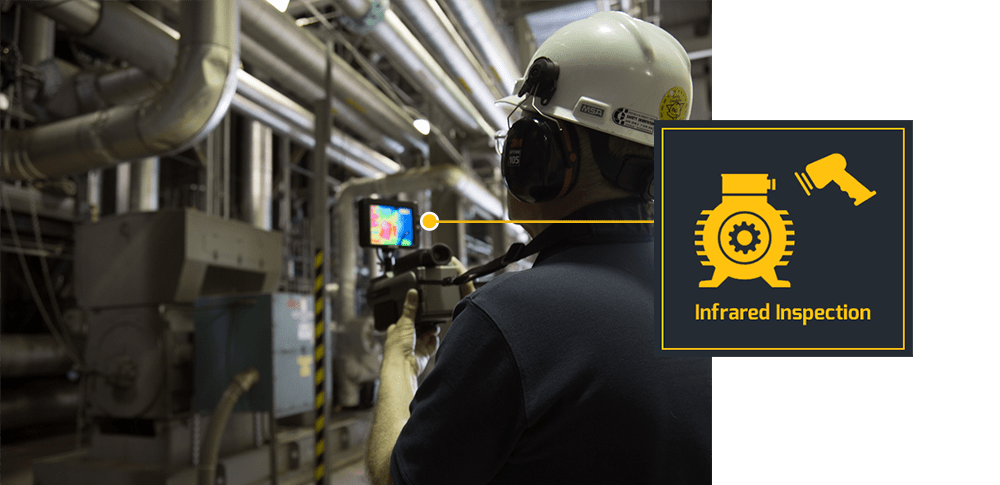
Of all the preventative maintenance diagnostics tools, infrared scanning of electrical equipment is one of the least intrusive. Electrical anomalies are easily identified, and with good documentation, corrective measures can easily be scheduled within routine maintenance service periods in order to correct problems while avoiding catastrophic failures.
As with route based vibration analysis, an effective infrared or thermographic inspection program has to be done on a routine basis on all electrical equipment. A list should be established of all the critical or high value electrical equipment which should delineate equipment location along with specific equipment names. In this manner good documentation can be done while scanning equipment to be assured no equipment is missed and providing a means for documentation of any anomalies identified during the scanning process. This documentation also provides a means for providing maintenance personnel with accurate information as to the exact location of the problem component.
Infrared scanning, or thermal scanning as it is quite often referred to, is not an x-ray of the equipment and is not effective without having the electrical enclosure opened to provide a good view of all the electrical components within the enclosure. OSHA has established electrical standards for safety requirements during infrared scanning of electrical equipment that are based on the National Fire Protection Association Standards NFPA 70E. These standards are very specific and should be followed by those opening and closing electrical enclosures along with those performing the infrared inspection. Safety always is first priority with any of the diagnostics disciplines; however, is utmost important when performing thermal or infrared scanning.
A final inspection report can be generated of all anomalies identified during the infrared scan. The list will identify those items which from most critical to least critical and those that should be shutdown and repaired immediately due to an excessively defective condition. The report may also contain some type of corrective action recommended based on the component condition at the time of infrared scanning.

